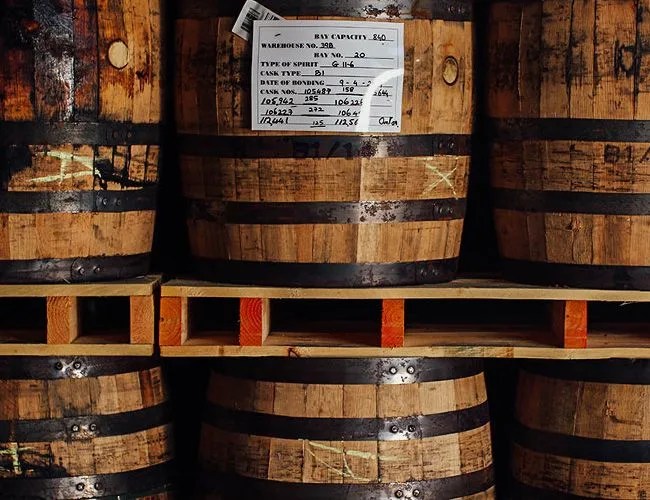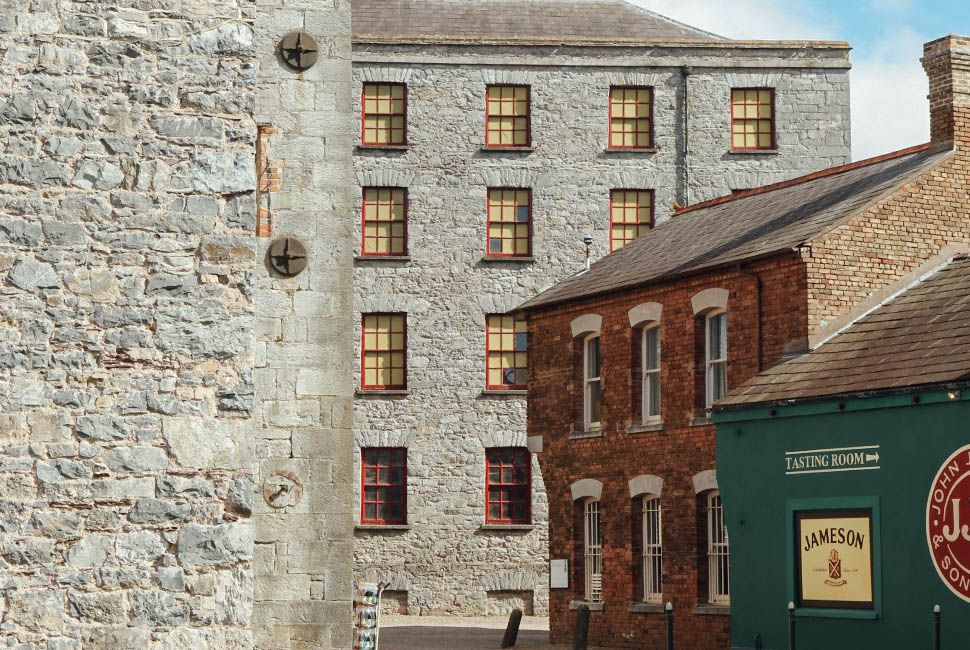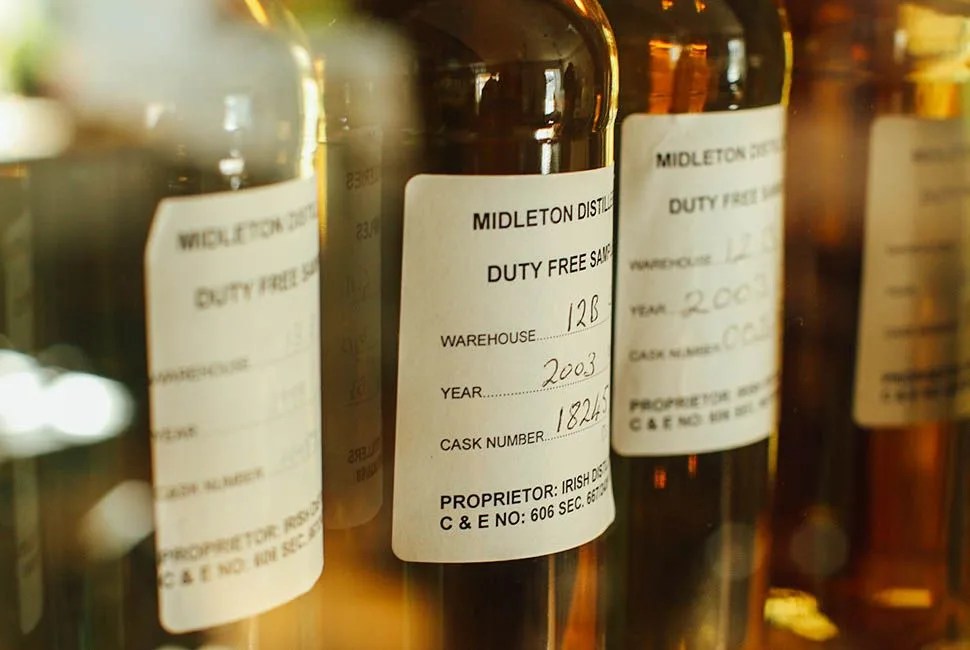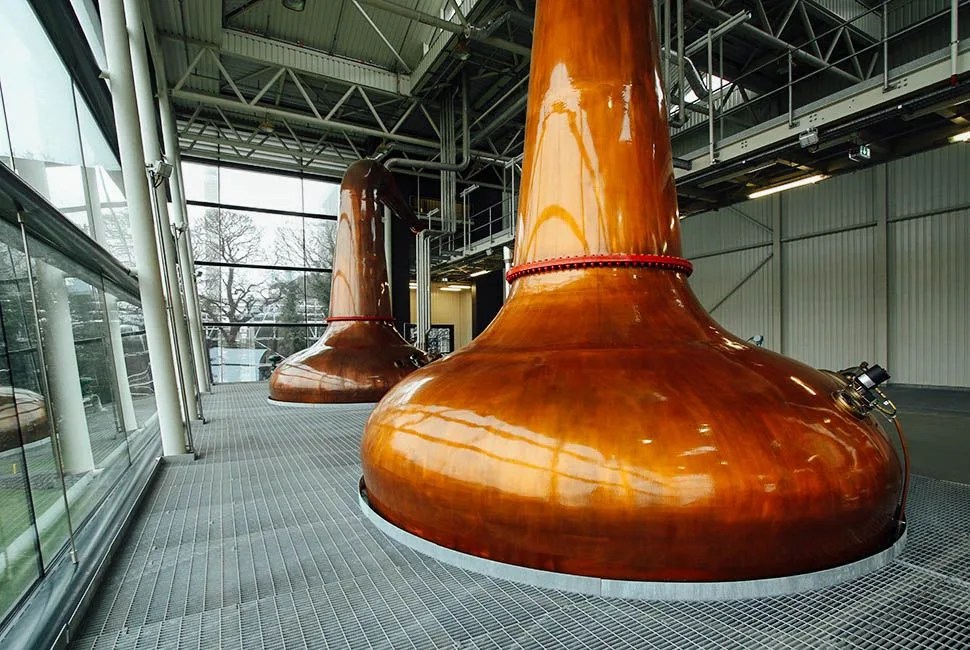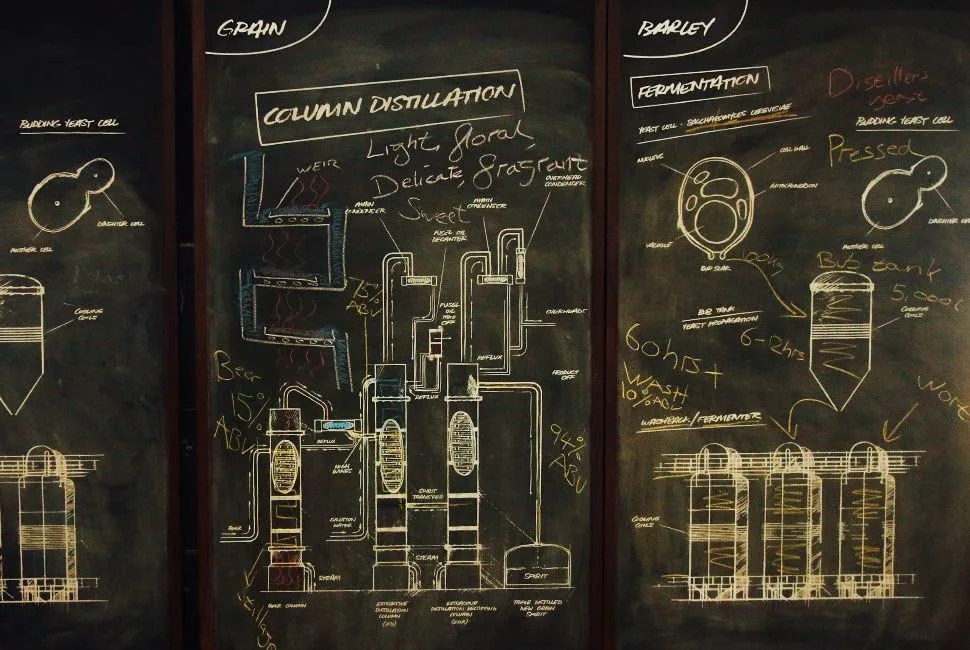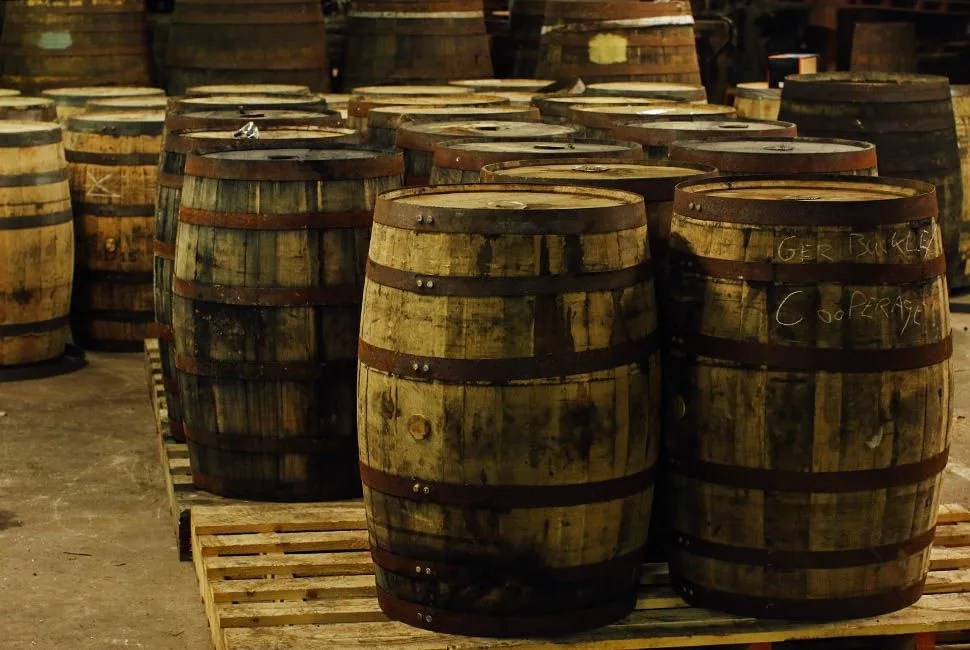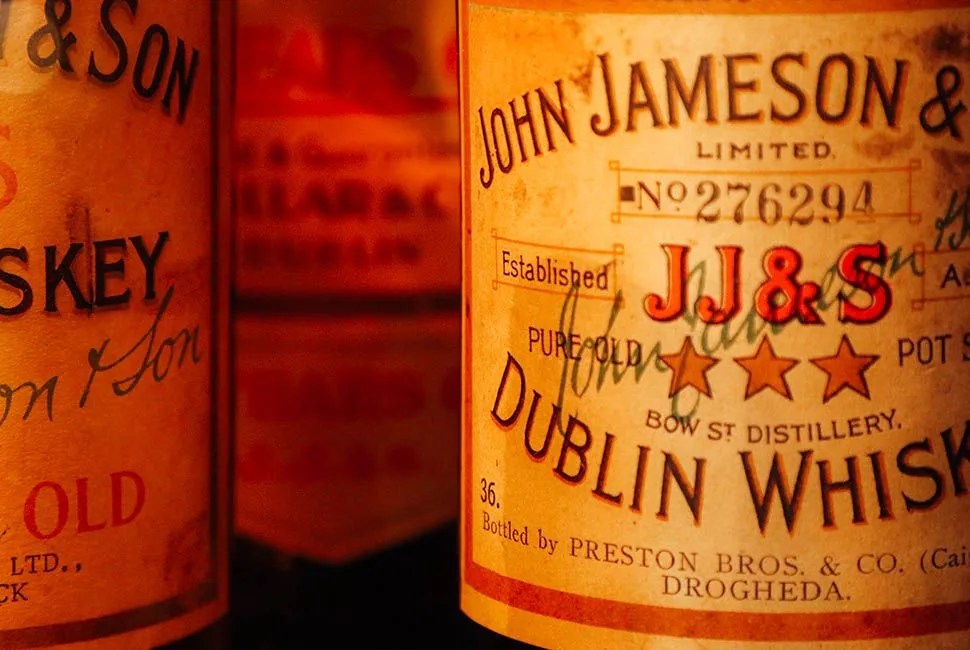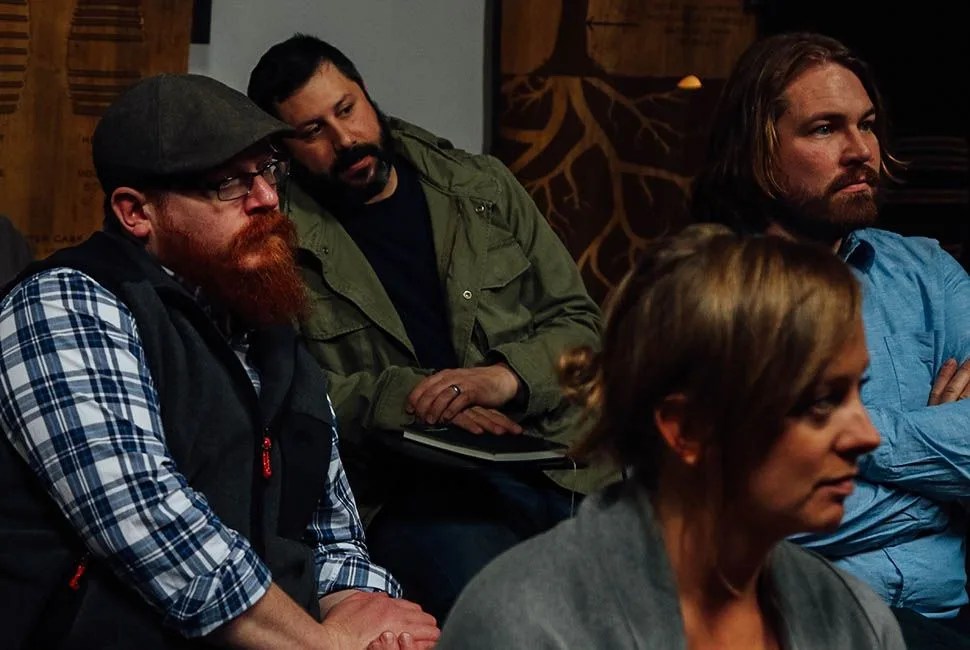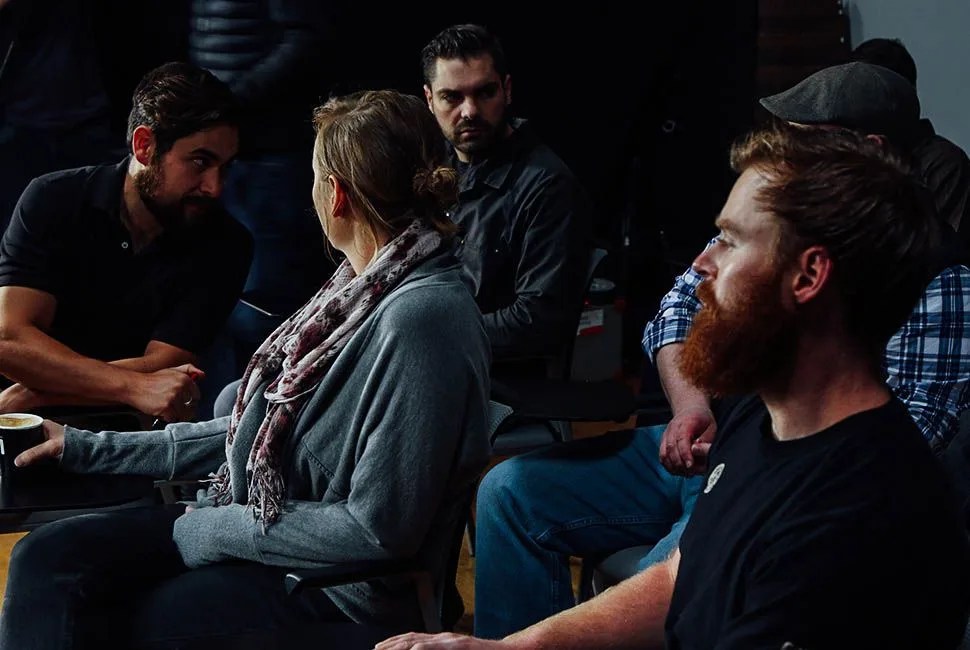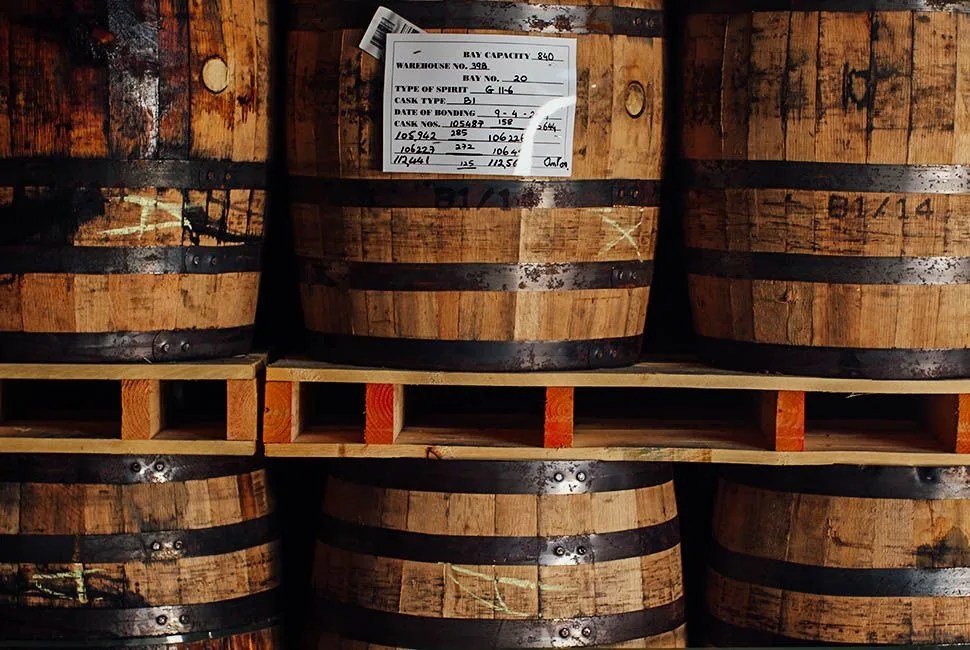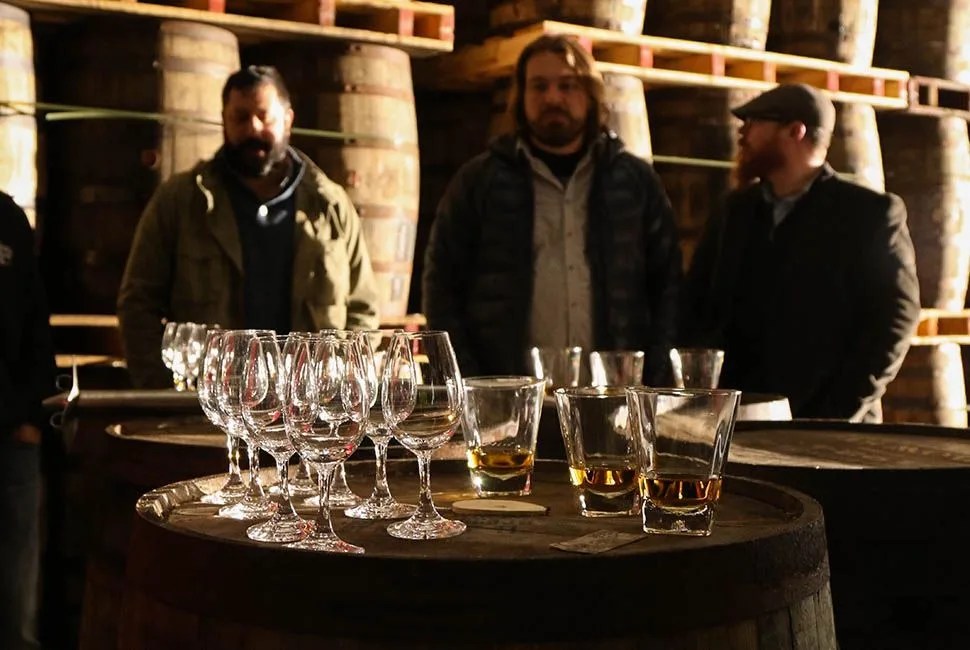12 photos
Class was in session on the top floor of Jameson‘s Whiskey Academy building. The classroom had all the normal trappings — chalkboards, textbooks, informational posters — plus a few thousand bottles of liquor on shelves, filled with liquids of many hues and labelled in the language of whiskey: first-use, second-use, sherry, American oak, red wine. Ten or so American craft beer brewers sat in pupil’s chairs and listened to Jameson Master Distiller Brian Nation as he stood before the chalkboard and explained where Jameson sources its barley. One brewer asked where exactly the barley comes from (answer: farms within 100 miles from the Midleton Distillery, outside Cork); another wanted to know what exactly happens to the mash once it’s been drained and filtered (answer: fed to lucky local cows).
It was all part and parcel of Jameson’s Drinking Buddies program, which links American Craft brewing and the flagship Irish whiskey producer through a barrel-sharing program. In its second official year, Drinking Buddies has expanded from sending Jameson barrels to one brewery (last year, it was Brooklyn-based Kelso) to five breweries — Captain Lawrence in Elmsford, New York, Deep Ellum in Dallas, Texas, Great Divide in Denver, Colorado, Angel City in Los Angeles, and Hilliard’s in Seattle, Washington — each receiving six barrels from Jameson in which to age whatever beer they choose to create.
The program is happening at an important moment for barrel aging in craft beer. Though beer was for hundreds of years held and fermented in wooden barrels, modern barrel aging has boomed among both drinkers and brewers since the early 2000s, producing some of the most beloved, sought-after and expensive beers to date. When the category was introduced at the Great American Beer Festival in 2002, there were just 26 entrants; by 2012 that number had grown to 116; in 2015, the category was split in four (wood and barrel aged, strong beer, strong stout, sour beer) to account for increased interest and competition. Six of the top 10 beers on Beeradvocate.com, the community’s go-to rating source, are barrel aged, all in either bourbon or rye whiskey barrels.
It’s all followed a straightforward formula, first established by breweries like Goose Island, Firestone Walker and New Belgium in the 1990s: beer that’s brewed and then aged in barrels previously holding liquor (most popularly, bourbon) gains complexity from the previous resident’s leftover flavor particles, and from the wood of the barrels themselves.
When aging beer in first-use bourbon barrels, Browning said, “you’ll get huge vanilla overtones. But with Scotch [and Irish] whiskey distilling, that whiskey will develop this very nice soft vanilla, and overall [the resulting beer] will be more delicate in flavor.”
“As a brewer, I personally like it because it can be unpredictable. It’s like solving a puzzle you don’t know the answer to right away,” said Molly Browning, who runs Brooklyn Brewery’s barrel-aging program out of its Navy Yard warehouse, which can house up to 2,000 barrels. For the drinker, barrel-aged beers add complexities and big flavors that, when done well, can be downright shocking. “It’s wonderfully complex. You feel like you’re getting to know the beer better,” she said. Barrel aging gives brewers the ability to induce tannins, sour notes and other flavors generally associated only with wine and spirits, and has been credited with widening craft beer drinkers’ sensibilities and reaching consumers who might not have been beer drinkers otherwise. “The complexities there with a very well-made beer are just staggering,” Browning concluded.
